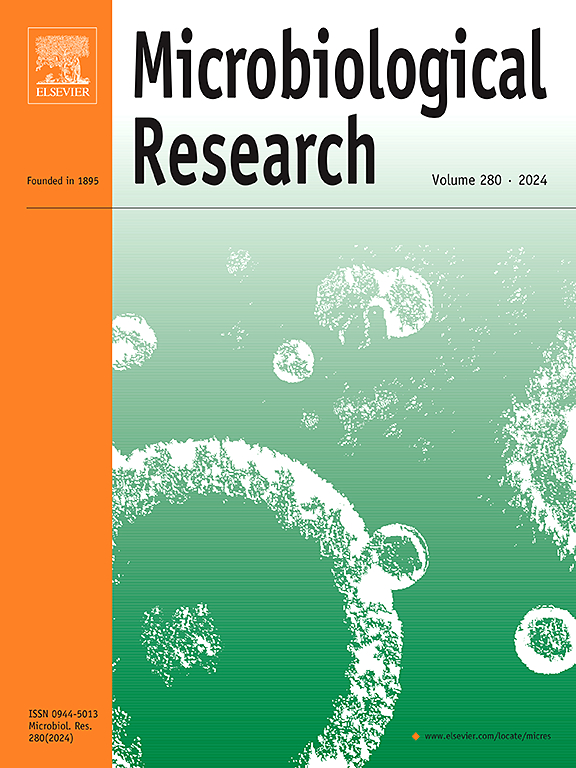ArcAB system promotes biofilm formation through direct repression of hapR transcription in Vibrio cholerae
IF 6.1
1区 生物学
Q1 MICROBIOLOGY
引用次数: 0
Abstract
Vibrio cholerae, the causative agent of cholera, can efficiently adapt its metabolic processes, including biofilm formation, in response to varying respiratory conditions— such as aerobic, microaerobic, and anaerobic— through the ArcAB system. In this study, we elucidate the activation mechanism of V. cholerae ArcB and ArcA and identify ArcB residues H292, D577, and H722, along with ArcA residue D54 as key phosphorylation sites. Furthermore, we demonstrate that the ArcAB system plays a crucial role in regulating biofilm formation under both aerobic and anaerobic conditions. Our findings reveal that the positive regulation of biofilm formation by the ArcAB systems involves the high cell density (HCD) quorum sensing (QS) regulator HapR. Specifically, phosphorylated ArcA represses hapR transcription, thereby promoting biofilm formation under anaerobic condition. This study also highlights an epistatic relationship between ArcA and HapR in biofilm regulation. Overall, our results underscore the critical role of the ArcAB system in the biofilm formation of pathogenic V. cholerae under oxygen-limiting conditions.
求助全文
约1分钟内获得全文
求助全文
来源期刊

Microbiological research
生物-微生物学
CiteScore
10.90
自引率
6.00%
发文量
249
审稿时长
29 days
期刊介绍:
Microbiological Research is devoted to publishing reports on prokaryotic and eukaryotic microorganisms such as yeasts, fungi, bacteria, archaea, and protozoa. Research on interactions between pathogenic microorganisms and their environment or hosts are also covered.
 求助内容:
求助内容: 应助结果提醒方式:
应助结果提醒方式:


